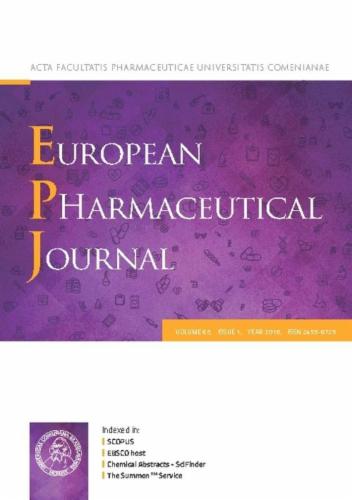局部递送含有微生物核酸的脂基纳米颗粒用于骨免疫调节。
IF 4.3
3区 医学
Q1 PHARMACOLOGY & PHARMACY
引用次数: 0
摘要
骨免疫调节是通过改变免疫环境来促进骨再生的一种策略。CpG-containing oligonucotides type C (CpG ODN C) CpG ODN C和polyinosic polycytidylic acid (Poly[I:C])是微生物核酸的类似物,已被研究用于各种免疫治疗应用。本研究探讨了CpG ODN C和Poly(I:C)作为骨再生目的的骨免疫调节剂的潜力。我们将每个核酸封装在一个基于脂质的纳米颗粒中,以便于在免疫细胞中传递到细胞内病原体识别受体。脂基纳米颗粒尺寸为±250 nm,带负电荷(-36 ~ -40 mV),包封效率为±60%。与自由核酸相比,含有核酸的脂质纳米颗粒Lip/CpG ODN C和Lip/Poly(I:C)可增加原代人巨噬细胞产生TNF、IL-6和IL-10。CpG ODN C(10µg/ml)和Lip/CpG ODN C(0.1、1和10µg/ml)处理的巨噬细胞条件培养基对人间充质基质细胞成骨分化的促进作用分别为2.6倍和3倍;Lip/Poly(I:C)未见影响。骨植入物由双相磷酸钙支架、骨形态发生蛋白(BMP) 2和悬浮在明胶甲基丙烯酰(GelMA)水凝胶中的脂基纳米颗粒组成。在兔骨外植入模型中评估植入物5周后的新生骨形成。根据悬浮在GelMA中的颗粒,制备了6组植入物:Lip/CpG ODN C、Lip/Poly(I:C)、Lip(空)、CpG ODN C、Poly(I:C)和空白GelMA组成的对照组。5周后,所有成骨细胞和破骨细胞活性活跃的植入物都形成了健康的骨组织,然而,所有植入物的新骨体积和支架降解量相似。我们认为核酸的工作浓度不足以诱导相关的炎症反应。此外,使用的BMP-2的剂量可能潜在地掩盖免疫刺激作用。Lip/CpG ODN C具有作为骨免疫调节生物活性剂的潜力,尽管进一步的体内验证应该证实目前的体外研究结果。本文章由计算机程序翻译,如有差异,请以英文原文为准。

Local delivery of lipid-based nanoparticles containing microbial nucleic acid for osteoimmunomodulation
Osteoimmunomodulation is a strategy to promote bone regeneration in implants by modifying the immune environment. CpG-containing oligonucleotides type C (CpG ODN C) and Polyinosinic:polycytidylic acid (Poly[I:C]) are analogs of microbial nucleic acids that have been studied for various immunotherapeutic applications. This research investigates the potential of CpG ODN C and Poly(I:C) as an osteoimmunomodulatory agent for bone regenerative purposes. We encapsulated each nucleic acid in a lipid-based nanoparticle to facilitate the delivery into intracellular pathogen recognition receptors in immune cells. The lipid-based nanoparticles were ±250 nm in size with a negative charge (−36 to −40 mV) and an encapsulation efficiency of ±60 %. Lipid-based nanoparticles containing nucleic acids, Lip/CpG ODN C and Lip/Poly(I:C), increased the production of TNF, IL-6, and IL-10 by primary human macrophages compared to free-form nucleic acids. Conditioned medium from macrophages treated with CpG ODN C (10 µg/ml) and Lip/CpG ODN C (0.1, 1, and 10 µg/ml) promoted osteoblast differentiation of human mesenchymal stromal cells by 2.6-fold and 3-fold, respectively; no effect was seen for Lip/Poly(I:C). Bone implants were prepared, consisting of a biphasic calcium phosphate scaffold, bone morphogenetic protein (BMP) 2, and lipid-based nanoparticles suspended in gelatin methacryloyl (GelMA) hydrogel. Implants were evaluated for de novo bone formation in an extra-skeletal implantation model in rabbits for 5 weeks. Based on the particles suspended in GelMA, six groups of implants were prepared: Lip/CpG ODN C, Lip/Poly(I:C), Lip (empty), CpG ODN C, Poly(I:C), and a control group consisting of empty GelMA. After 5 weeks, healthy bone tissue formed in all of the implants with active osteoblast and osteoclast activity, however, the amount of new bone volume and scaffold degradation were similar for all implants. We suggest that the working concentrations of the nucleic acids employed were inadequate to induce a relevant inflammatory response. Additionally, the dosage of BMP-2 used may potentially mask the immune-stimulatory effect. Lip/CpG ODN C holds potential as a bioactive agent for osteoimmunomodulation, although further in vivo demonstration should corroborate the current in vitro findings.
求助全文
通过发布文献求助,成功后即可免费获取论文全文。
去求助
来源期刊
CiteScore
9.60
自引率
2.20%
发文量
248
审稿时长
50 days
期刊介绍:
The journal publishes research articles, review articles and scientific commentaries on all aspects of the pharmaceutical sciences with emphasis on conceptual novelty and scientific quality. The Editors welcome articles in this multidisciplinary field, with a focus on topics relevant for drug discovery and development.
More specifically, the Journal publishes reports on medicinal chemistry, pharmacology, drug absorption and metabolism, pharmacokinetics and pharmacodynamics, pharmaceutical and biomedical analysis, drug delivery (including gene delivery), drug targeting, pharmaceutical technology, pharmaceutical biotechnology and clinical drug evaluation. The journal will typically not give priority to manuscripts focusing primarily on organic synthesis, natural products, adaptation of analytical approaches, or discussions pertaining to drug policy making.
Scientific commentaries and review articles are generally by invitation only or by consent of the Editors. Proceedings of scientific meetings may be published as special issues or supplements to the Journal.

 求助内容:
求助内容: 应助结果提醒方式:
应助结果提醒方式:


